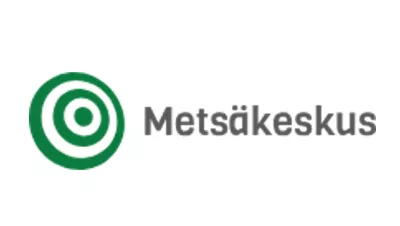General information
RDP Priority
- P5. Resource efficiency and climate
RDP Focus Area
- 5E: Carbon conservation & sequestration
RDP Measure
- M01: Knowledge transfer & information actions
Beneficiary type
- Advisory service
Summary
Drained peatland forests make up 50% of Finland’s forest carbon sinks. Drained organic peat soil is one of the two largest emissions sources in the land use sector. This CAP funded knowledge transfer project therefore aimed to increase forest owners’ awareness about making climate friendlier choices in the management of peatland forests and demand the same from their forestry contractors. New knowledge and information were disseminated through lectures, study trips and practical demonstrations.
Results
- By the end of 2022, a total of 19 events were organised and 628 forest owners and professionals received training on climate friendly forestry methods.
Resources
Documents
Context
More than 75% of Finland’s land area is forested, and forests have a crucial role to play in mitigating climate change. One third of Finland’s land area was originally mires (peat covered wetlands). Since the 1930s, about half of all mires have been drained for forestry. The growing trees which are rooted in these old, drained peatland forests make up 50% of Finland’s forest carbon sinks. However, at the same time, the drained organic peat soil is one of the two largest emission sources in the land use sector. Reducing emissions from drained peatland forest soil would lead to a significant and rapid reduction of emissions by 2035.
Around 75% of forest owners in the Pirkanmaa project region have peatland forests (>1 ha). Because the peatland forest parcels are often small, the group of owners is diverse. Some 570 000 of Finnish forest owners are private individuals, which makes the provision of training a challenge.
Objectives
The aim of this knowledge transfer project was to reach as many forest owners as possible to ensure that they can make climate conscious choices in forestry. In addition to the focus on owners, the project also increased the competencies of forestry professionals, such as contractors, which enables them to better respond to forest owners’ requests for environmentally friendly forest management.
Activities
Project activities included:
- Organising seven demonstration sites and delivering field training events to introduce different management methods for drained peatland forests.
- Conducting experiments in renewing and diversifying forest management to reduce CO2 emissions and water pollution from drained peatlands. This included optimising the ditch network maintenance by targeting the ditch cleaning activities to sites vital for silviculture and minimising them by increasing continuous forest cover in suitable locations. Participants’ experiences were gathered along with other data during the demonstrations and experiments and story maps were developed based on the information gathered.
- Disseminating research in an easy-to-understand language and organising 12 online training events covering: climate friendly and productive peatland forest management; spatial data in water management and harvest planning; climate change; forest damage and prevention; rewetting wetlands; ditch network maintenance; harvesting in peatland forests when the ground is not frozen; multiple use of peatland forests; and water protection structures and afforestation.
- Organising in 2022, one study trip on water protection measures and forest tree breeding in a project to Eastern Finland; and one to the Elmia Wood fair in Sweden, where the latest forest machines, work methods and research were introduced. The study trips involved networking with forest owners from other regions.
Main results
- By the end of 2022, 628 forest owners and professionals had received training on climate friendly forestry methods.
- A total of 19 events have been held (12 webinars and seven field training sessions). Around 15 experts from the partner organisations served as trainers.
- The digital story maps that were produced can be accessed remotely and thus promote climate-friendly training for those who cannot or do not wish to travel to attend trainings on site.
Key lessons
- Increasing forest owners’ awareness of climate friendlier forestry means they can request sustainability from forestry service companies, who then can align their services with the demand.
- The subject area of the project is very close to practice, so instead of theoretical training, forest owners are interested in seeing how things are implemented on practical demonstration sites. In the training of forest owners and forestry operators, it is advisable to use as many practical examples as possible.
- The sharing of information and skills within peer networks has important long-term effects. In training events, demonstrations and other project events, forest owners can see new methods in practice and exchange their thoughts with other forest owners. This lowers the threshold to experiment in their own forest management as well. In addition, forest owners can exchange experiences in the networks that also include researchers and trainers.
- Successful implementation of such training projects requires that several parties with unique skills and networks share contributions to it.
Contacts
Ari Lahteenmaki


